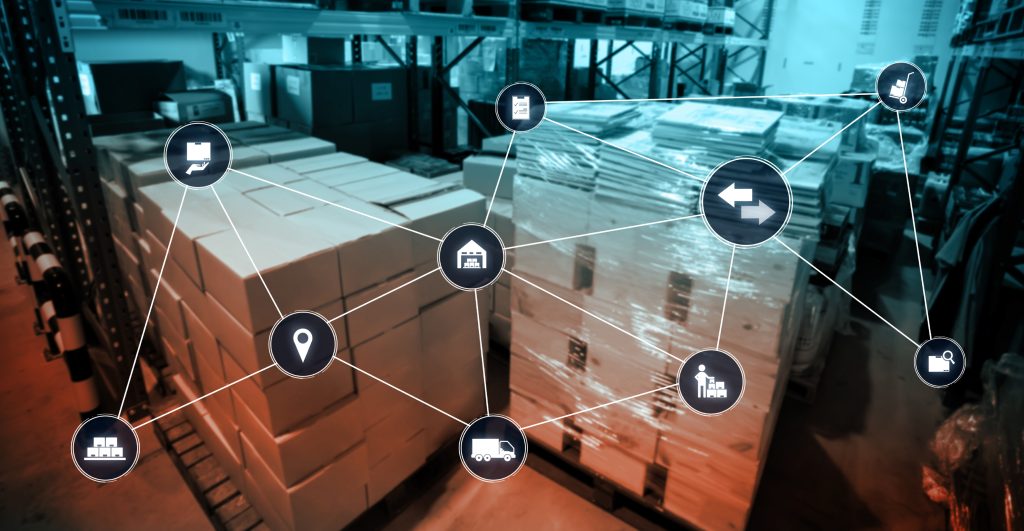You may think that reverse logistics is a complex and time-consuming process, but with the help of Artificial Intelligence (AI), companies are revolutionizing the way they handle product returns. AI technology is being used to optimize returns allocation, gain actionable insights from customer feedback, implement intelligent dynamic pricing, streamline returns processing time, customize returns management operations, and achieve clarity and control in managing returns. By leveraging AI in reverse logistics, companies can efficiently handle returns, reduce costs, and improve customer satisfaction. But how exactly does AI work in this context? Stay tuned to find out how AI is transforming the world of reverse logistics and why it is essential for companies in today’s competitive market.
Optimization of Returns Allocation
Optimize returns allocation with the power of AI and streamline your reverse logistics operations. By leveraging AI technology, you can improve customer satisfaction, reduce costs, enhance decision making, increase profitability, and optimize resource allocation in your returns management process.
AI can revolutionize returns allocation by using real-time data and advanced algorithms to make informed decisions. It can analyze customer reviews and feedback to identify patterns and insights, allowing you to take proactive measures to improve product quality and reduce return rates. With AI, you can also implement intelligent dynamic pricing strategies, maximizing the value of returned items and increasing profitability.
Furthermore, AI can calculate the total returns management cost for each return scenario, enabling you to make data-driven decisions on the most cost-effective course of action. This not only reduces processing time by 75%, but also ensures efficient resource allocation and minimizes unnecessary expenses.
Actionable Insights From Customer Feedback
Gaining actionable insights from customer feedback is essential for optimizing returns management and improving overall customer satisfaction. By leveraging customer reviews and communication channels, AI can provide valuable information that can be used to enhance decision making and increase profitability in reverse logistics. Here are five ways in which actionable insights from customer feedback can be utilized:
- Improving customer satisfaction: By analyzing customer feedback, AI can identify pain points in the returns process and make necessary improvements to enhance the overall customer experience.
- Reducing return rates: Through the analysis of customer feedback, AI can identify common reasons for returns and develop strategies to address these issues, ultimately reducing return rates.
- Enhancing decision making: AI can analyze customer feedback to gain insights into customer preferences, allowing businesses to make informed decisions regarding product assortment, packaging, and customer service.
- Increasing profitability: By understanding customer needs and preferences through feedback analysis, businesses can tailor their offerings to meet customer expectations, leading to increased customer satisfaction and ultimately, profitability.
- Streamlining process improvements: AI can identify trends and patterns in customer feedback, enabling businesses to make data-driven process improvements that can streamline reverse logistics operations and reduce costs.
Intelligent Dynamic Pricing for Returns
Intelligent dynamic pricing for returns allows businesses to maximize the value of returned items by utilizing AI algorithms to determine the optimal pricing strategy. With automated pricing analysis and real-time customer sentiment analysis, AI can accurately assess the condition and demand for returned products. This helps businesses set competitive prices that attract buyers while ensuring profitability.
To expedite returns processing, AI can also provide personalized return solutions. By analyzing customer data and purchase history, AI can offer options such as exchanges, store credits, or refunds, tailored to each individual customer’s preferences. This enhances the customer experience and increases satisfaction.
Furthermore, AI plays a crucial role in efficient returns routing. By analyzing factors such as location, inventory availability, and cost, AI algorithms can determine the most cost-effective and timely route for returned items. This ensures that products are returned to the appropriate fulfillment centers or reselling channels quickly and efficiently.
The table below summarizes the benefits of intelligent dynamic pricing for returns:
| Benefits of Intelligent Dynamic Pricing for Returns |
|---|
| Maximize value of returned items |
| Accurate pricing based on automated analysis |
| Real-time customer sentiment analysis |
| Expedited returns processing |
| Personalized return solutions |
| Efficient returns routing |
Streamlining Returns Processing Time
To further enhance the efficiency of returns management, one crucial aspect to focus on is streamlining returns processing time. By reducing the time it takes to process returns, you can improve reverse logistics, increase profitability, and enhance customer satisfaction. Here are five ways to streamline returns processing time:
- Implement AI-powered automation: Utilize AI technology to automate the retrieval, sorting, and containerization of returns. This can significantly speed up the processing time and minimize the need for manual labor.
- Leverage robotics: Integrate robotics into the returns management process to expedite next steps and simplify decision-making. Robotics can transport returns between warehouse stations, automate picking operations, and improve labor efficiency.
- Optimize workflow and communication: Use AI to analyze real-time data from customer reviews and returns communication channels. This will provide actionable insights and help identify problems in fulfillment operations that contribute to returns.
- Utilize predictive analytics: Apply AI and ML algorithms to estimate the most profitable path for each return scenario. This will enable you to make informed decisions and determine the best course of action for each return, reducing processing time.
- Enhance inventory management: Incorporate AI-based systems to track and manage returned inventory. This will minimize storage costs and ensure efficient routing of returns to the best fulfillment centers.
Customizing Returns Management Operations
Effective returns management operations can be customized to meet the unique needs and preferences of customers. By leveraging AI technology, companies can improve customer satisfaction, reduce return rates, increase profitability, and enhance decision-making processes.
Customizing returns management starts with personalized returns communication. AI can analyze customer data and preferences to tailor the returns process to individual customers. This may include offering flexible return options, providing clear instructions, and offering proactive solutions to potential issues. By customizing returns communication, companies can improve customer satisfaction and reduce return rates.
AI can also play a crucial role in enhancing decision-making processes in returns management. By analyzing data such as customer feedback, product reviews, and return patterns, AI can provide actionable insights to optimize returns handling. This includes identifying trends and patterns that can inform product improvements, identifying areas for process optimization, and predicting customer behavior to proactively address potential returns.
Furthermore, AI can help increase profitability by optimizing the returns process. By analyzing data on return reasons, product conditions, and customer preferences, AI can enable intelligent routing of returns to the most appropriate fulfillment centers. This ensures efficient processing and minimizes costs associated with returns handling.
Intelligent Routing of Returns
The routing of returns plays a crucial role in optimizing the efficiency and cost-effectiveness of reverse logistics operations. To ensure returns routing efficiency, AI is utilized in various ways to streamline the process and maximize benefits. Here are five key aspects of intelligent routing of returns:
- Returns allocation optimization: AI disposition engines use real-time data to make informed decisions on how to allocate returns to the most appropriate fulfillment centers, reducing transportation costs and improving efficiency.
- Customer feedback analysis: AI can analyze customer feedback and reviews to identify patterns and insights that can be used to improve the returns process and address common issues.
- Dynamic pricing strategies: AI can enable intelligent dynamic pricing for returned items, taking into account factors such as product condition, market demand, and pricing trends to optimize resale value and maximize profitability.
- Returns process streamlining: AI can help streamline the returns process by automating tasks such as scanning and sorting returned items, reducing processing time and improving accuracy.
- Cost optimization: AI can calculate the total cost of managing returns and determine the most cost-effective course of action for each return scenario, whether it’s reselling, recycling, or remanufacturing.
Achieving Clarity and Control in Managing Returns
You can achieve clarity and control in managing returns by leveraging AI and robotics technologies. These technologies offer a range of benefits, including improved returns visibility, reducing return rates, enhancing customer satisfaction, maximizing value on returned items, and reducing fulfillment costs.
One way AI can help achieve clarity and control is through improved returns visibility. AI can provide real-time data and analytics that allow you to track and monitor returns throughout the entire process. This visibility enables you to identify bottlenecks, inefficiencies, and areas for improvement in your returns management operations.
Additionally, AI can help reduce return rates by optimizing fulfillment processes. By analyzing customer data and purchase history, AI can identify patterns and trends that contribute to returns. With this information, you can make proactive changes to your operations, such as improving product descriptions or sizing guidance, to minimize return rates.
Furthermore, AI can enhance customer satisfaction by providing personalized and efficient returns experiences. AI-powered chatbots and virtual assistants can handle returns inquiries and provide quick and accurate responses, improving customer support and reducing frustration.
In terms of maximizing value on returned items, AI can enable intelligent dynamic pricing. By analyzing market demand, product condition, and other factors, AI can determine the optimal price for each returned item, increasing the chances of resale and reducing inventory write-offs.
Lastly, AI and robotics can help reduce fulfillment costs by automating and streamlining returns processes. Robotics technologies can automate tasks such as sorting, picking, and containerizing returned items, reducing the need for manual labor and increasing efficiency. AI can also provide insights on the most cost-effective disposition options for each return scenario, helping you minimize fulfillment costs.
By leveraging AI and robotics technologies, you can achieve clarity and control in managing returns, leading to improved returns visibility, reduced return rates, enhanced customer satisfaction, maximized value on returned items, and reduced fulfillment costs.
| Benefits of AI in Returns Management | Benefits of Robotics in Returns Management |
|---|---|
| – Improved returns visibility | – Turn returned items to saleable inventory 25% faster than manual processes |
| – Reducing return rates | – Improve labor efficiency up to 35% with AI robotic automation |
| – Enhancing customer satisfaction | – Streamline returns processes and ensure higher profitability |
| – Maximizing value on returned items | – Help expedite next steps and safeguard costs through mobile scanning technology |
| – Reducing fulfillment costs | – Enhance labor allocation and improve the speed of reverse logistics |



